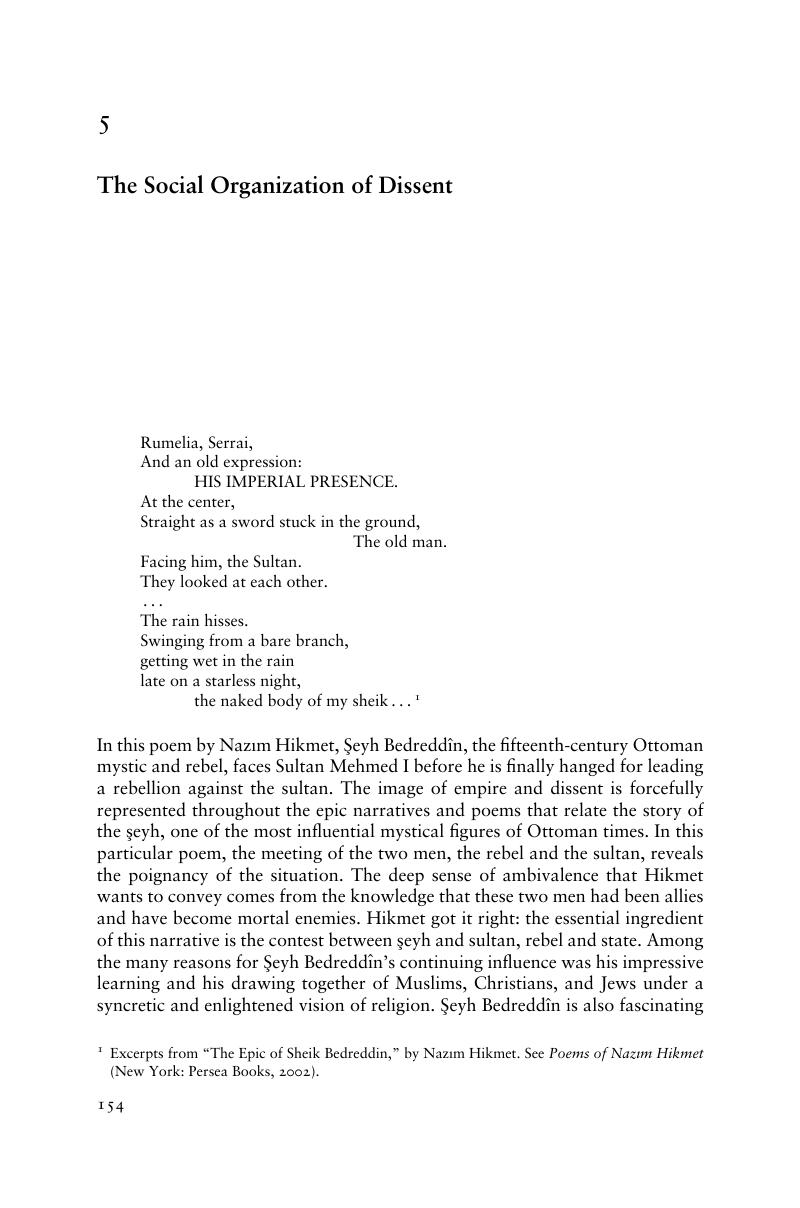Book contents
- Frontmatter
- Contents
- Preface
- Transliterations
- PART I AN IMPERIAL MODEL
- 1 Introduction
- 2 Emergence: Brokerage across Networks
- 3 Becoming an Empire: Imperial Institutions and Control
- 4 Maintaining Empire: An Expression of Tolerance
- 5 The Social Organization of Dissent
- PART II THE TRANSFORMATION OF THE EIGHTEENTH CENTURY
- Bibliography
- Index
- References
5 - The Social Organization of Dissent
Published online by Cambridge University Press: 05 September 2012
- Frontmatter
- Contents
- Preface
- Transliterations
- PART I AN IMPERIAL MODEL
- 1 Introduction
- 2 Emergence: Brokerage across Networks
- 3 Becoming an Empire: Imperial Institutions and Control
- 4 Maintaining Empire: An Expression of Tolerance
- 5 The Social Organization of Dissent
- PART II THE TRANSFORMATION OF THE EIGHTEENTH CENTURY
- Bibliography
- Index
- References
Summary

- Type
- Chapter
- Information
- Empire of DifferenceThe Ottomans in Comparative Perspective, pp. 154 - 192Publisher: Cambridge University PressPrint publication year: 2008

